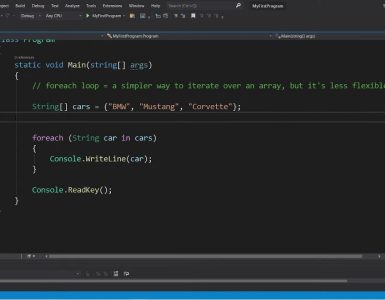Go (also known as Golang) is a compiled, multi-threaded, general-purpose programming language from Google. It is open-source. It is most commonly used for developing web services and client-server applications.
It is said that Golang is the language of the future. It’s simple, efficient and very beginner-friendly. In this mini-review we will try to understand the main features and scope of the increasingly popular programming language.
Creation Story
The Go language began in September 2007. That is when Rob Pike, Robert Grismer and Ken Thompson started preparing its development. At the beginning of 2008, Thompson began developing the compiler. A little later, Ian Taylor began to develop the interface. And by the end of the year the project had been developed with Russ Cox. And in 2009 Golang went out into the masses and became available to everyone. The logo for the new language was a gopher.
One of the reasons that motivated the creators is the particular difficulty of some projects in Google for existing languages. For this reason, the developers of this language tried to make Go as simple as possible, but at the same time efficient and safe.
Interesting fact: The original and correct name is Go. But in the process of registering a domain for it, it turned out that go.org was busy. Because of this, they had to come up with an alternative: golang.org.

Features of Go
The Go language was developed with the aim of implementing complex projects but with a simplified language. As a result, the language has been given a number of non-standard features. We will talk about them below.
- No inheritance. Although there is no inheritance in Go, it does not mean that there is no hierarchy in the code. It just works a bit differently than in conventional programming languages. It introduces a new OOP model in which the usual objects and classes are absent but there are data structures with methods.
- Multithreading. Support for multiple threads by default makes it easier to write code for powerful applications. The Go programming language has goroutines and channels for this purpose. Goroutines are parallel operations that can be executed independently of the function in which they run. Generally, goroutines represent a function call and execute their instructions sequentially. When we run a program in Go, we are already working with at least one goroutine. It is represented by the main function and sequentially executes the instructions defined within it. To create a goroutine, you have to write go in front of it.
- Simple and straightforward syntax. There are no objects, classes or inheritance that complicate the code and its changes. It is accessible to beginners and easy to learn. The official Go manual is only 50 pages long, easy to read and contains examples. Also, the simplified syntax allows you to quickly read someone else’s code – from left to right. There are no standards, notations or comments required. This is important in teamwork.
- Cross-platform. Google’s language is supported on Windows, Linux, macOS, and Android. It also works with FreeBSD, OpenBSD and other UNIX systems. The code is also portable: programs written for one of these operating systems can easily be ported to another operating system with recompilation.
- Lack of constructs for OOP. Go does not support all of the object-oriented programming features. For example, it does not have classes and inheritance. This, too, is a deliberate decision to simplify the code to achieve a minimum of redundancy and a high speed of program execution.
Golang’s Potential
Go developers have created an excellent programming language that, while still very young, has already shown excellent results in creating secure and scalable applications with a minimal amount of work.
Due to these advantages, Golang has already been implemented in their workflows by companies such as IBM, Intel, Ozon, Avito and VKontakte. It is very likely that other major companies will soon move to this development language.
Its simplicity, clarity and concise manual make it ideal for developing complex projects and for newcomers to learn. For this reason, it is not uncommon to recommend it as a first programming language. After all, it’s a simple language that can be easily learned in a very short period of time. It can therefore be deduced that you can develop in it much faster than in other languages.







































Add comment